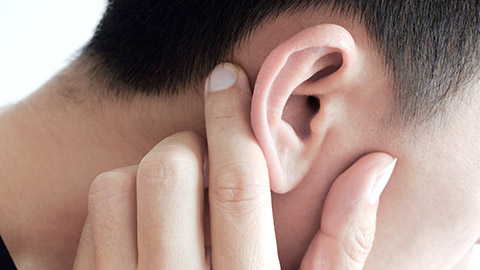06/21/2022

A client in a student clinic has a chronic, debilitatingly painful condition: trigeminal neuralgia. She gets surprising relief, if only for a short time, from massage—not on the painful area, but close by. Why did this happen? Can we recreate this success? Can we prolong it?
Resources:
Pocket Pathology: www.abmp.com/abmp-pocket-pathology-app
Newell, I.M. (1976) ‘Trigeminal neuralgia: induced remission without surgery, and observations on its aetiology’, The Medical Journal of Australia, 1(17), pp. 605–607. doi:10.5694/j.1326-5377.1976.tb140905.x.


Anatomy Trains is a global leader in online anatomy education and also provides in-classroom certification programs for structural integration in the US, Canada, Australia, Europe, Japan, and China, as well as fresh-tissue cadaver dissection labs and weekend courses. The work of Anatomy Trains originated with founder Tom Myers, who mapped the human body into 13 myofascial meridians in his original book, currently in its fourth edition and translated into 12 languages. The principles of Anatomy Trains are used by osteopaths, physical therapists, bodyworkers, massage therapists, personal trainers, yoga, Pilates, Gyrotonics, and other body-minded manual therapists and movement professionals. Anatomy Trains inspires these practitioners to work with holistic anatomy in treating system-wide patterns to provide improved client outcomes in terms of structure and function.
Website: anatomytrains.com
Email: info@anatomytrains.com
Facebook: facebook.com/AnatomyTrains
Instagram: www.instagram.com/anatomytrainsofficial
YouTube: https://www.youtube.com/channel/UC2g6TOEFrX4b-CigknssKHA
0:00:01.2 Ruth Werner: Hey, I have a client who listeners, did you know I have a growing library of NCB approved one-hour online self-paced continuing education courses that you can do any time, anywhere? Well, now you know, current classes include what's next COVID 19 updates from Message therapists and a massage therapists, Introduction to pharmacology part one, and brand new, a massage therapist's Introduction to pharmacology part two, classes are $20 each and they confer one hour of continuing education credit. Wanna know more? Visit my website at ruthwerner.com and check it out. Be sure to sign up for my mailing list so you'll never miss a new class.
0:00:47.6 S2: Anatomy trains is delighted to invite you to our in-person fascial dissection workshop, May 30th through June 3rd, 2022. We're excited to be back in the lab with Anatomy Trains author Tom Myers and master dissector Todd Garcia, in Todd's laboratory of anatomical enlightenment in Boulder, Colorado. Join students from around the world and from all types of manual movement and fitness professions to explore the real human form, not the images you get from books. Visit anatomytrains.com for details.
0:01:33.5 RW: Hi, and welcome to I have a client who, pathology conversations with Ruth Werner, the podcast where I will discuss your real life stories about clients with conditions that are perplexing or confusing. I'm Ruth Warner, author of a massage therapist Guide to pathology, and I have spent decades studying, writing about and teaching about where massage therapy intersects with diseases and conditions that might limit our client's health. We almost always have something good to offer, even with our most challenged clients, but we need to figure out a way to do that safely, effectively and within our scope of practice, and sometimes, as we have all learned, that is harder than it looks. Today, I have a client whose story is a happy one, at least for a specific period of time in relation to a condition that is on my short list of things I hope I never get, Trigeminal neuralgia.
0:02:33.8 RW: And the story goes like this. "Hi, Ruth, I'm a second year student in Canada. I had a client in our student clinic come in with trigeminal neuralgia, she's waiting for surgery in constant dull pain controlled by meds, she had total pain relief while I was working around her cervical transfers processes on the same side as her nerve pain. It lasted for about five minutes after I was finished working that area, she was able to talk without pain during that section of the treatment, and for a few minutes after the end of the 60-minute session, I don't know what might have happened, but she was thrilled that's it, that's all I've got. Truthfully, that's all our contributor got somehow working at the transfer processes of someone with pre-surgical trigeminal neuralgia led to some significant relief at least for a short while, and I can tell you based on everything I know about trigeminal neuralgia, that is a GBD, a great big deal." And wouldn't it be good if we could figure out what actually happened so that such a thing might happen again or maybe even be built on to create treatment strategy with longer lasting benefits, but I'm getting ahead of myself.
0:03:49.1 RW: First, we really have to talk about trigeminal neuralgia or TN. You will recall that the trigeminal nerve, cranial nerve 5 is the main century nerve for the face when we bite our cheek or have a toothache or pluck a nose hair or even when we have a headache, the trigeminal nerve is involved. It's called the trigeminal nerve because it has three main branches, one that emerges from the mandible, one from the maxillary, and one from the frontal bone above the eye. Of course, everything is in pairs, so we have two of each of these, and I will include a picture of this from my article on client endangerment from massage and body work if you'd like to see what we're talking about, when the trigeminal nerve is irritated and we'll talk about what might cause that irritation in a minute, it can become damaged, and this is a type of neurogenic pain, this is a pain response elicited by damage to nerve tissue which distinguishes this from nociceptive pain, which is a Response elicited by damage to other kinds of tissue, trigeminal neuralgia has a couple of other names, tic douloureux is the French name, which means unhappy tick or spasm, because people will have facial spasms with the unpredictable paroxysmal blasts of pain that this condition can cause, suicide disease is another name for trigeminal neuralgia, and that gives you an idea of how extreme this condition can be.
0:05:20.7 RW: To talk about the pathophysiology of TN, I'm going to quote my March April 2020 article from massage and bodywork magazine on this topic. Most of our neurons are covered by a layer of material called myelin, which serves to speed transmission and to provide electrical insulation to individual axons, in the peripheral nervous system, the myelin sheaths of the trigeminal nerve are constructed of schwann cells that are strong like beads along the individual neurons, but as the fibers approach the brain, they're covering changes from schwann cells to the oligodendrocytes that provide myelin in the central nervous system. In this transition area, the protective layer on those neurons is thinner than in other locations and vulnerable to damage, physical damage to the trigeminal nerve as it approaches the ponds appears to be a factor in the symptoms of TN sometimes, small arteries inside the skull may compress a vulnerable portion of the trigeminal nerve in a phenomenon called neurovascular conflict, and this can be identified in MRI tests with good accuracy and specificity. When neurovascular conflict is present, an artery irritates the nerve and wears away at the already thin myelin covering in this transition area, and this in itself can be painful, but it also creates a situation where adjacent neurons in the trigeminal nerve now also lack electrical insulation.
0:06:52.4 RW: But neurovascular conflict is not a complete explanation of TN for these reasons, one, neurovascular conflict is found in only about half of the people with trigeminal neuralgia symptoms, two, neurovascular conflict doesn't always cause demyelination, three, trigeminal neuralgia pain persists in about 30% of patients after neurovascular conflict is surgically corrected and four, neurovascular conflict is frequently found during autopsies of people who never reported TN pain. Clearly, more is going on here than meets the eye. It is possible that trigeminal nerve compression happens at more than one location, so correcting it in one spot might not solve the problem, it may be that changes in cerebral perfusion, the amount of blood flow through local cerebral arteries influences pain signals, we know that injured nerves in the peripheral nervous system can become inflamed and then compressed at multiple locations, sometimes we call this Multiple Crush Syndrome, it seems reasonable that the trigeminal nerve might also be vulnerable to this phenomenon, and living with the threat of unpredictable bouts of breath-taking pain inevitably has an effect on mood states, which can exacerbate pain awareness, TN may also cause structural changes in the central nervous system that lead to increased numbers of pain-related receptors and higher levels of pain-related neurotransmitters, and now we're talking about central sensitization.
0:08:28.5 RW: This sequence doesn't happen to everyone, but it can be a factor in chronic pain syndromes for people who have TN and lots of other conditions. Right, so in some way or other, the trigeminal nerve might be irritated or even injured in one or more locations, often because of a strangulating artery, and this leads to the tell-tale signs and symptoms, which means paroxysmal bolts of electrical shock-type pain on one side of the face, it could be mainly in the forehead, the eye, the cheek, the nose or the jaw, or any combination, these shocks may last only an instant or persist for several seconds, while sometimes they're predictable, 'cause they happen when we do things like chewing or swallowing or talking, sometimes the attacks are spurious, unattached to any identifiable trigger, descriptions of this pain are very consistent, people call it zapping, exploding, stabbing and hot poker shoved up the nose, episodes of TN may happen dozens of times a day and then go away for a while, only to come back weeks or months later, for no known reason, TN comes into... Sometimes classic TN involves these short episodes of extreme pain and no pain between those incidents, but secondary TN can involve low-grade dull or aching pain that is pretty much constant with occasional episodes of extreme shocks or bolts of pain, like we see with classic TN.
0:10:01.4 RW: Secondary TN is more likely to be related to something like multiple sclerosis or a tumor or an aneurysm or some other lesion that might press on the trigeminal nerve, because the client in our story today is described as having constant dull pain managed by meds. I'm wondering if they have secondary TN, and in a way that might be good news, because surgery to correct an anatomic anomaly, like an aneurysm or a tumor could be curative. Alright, so that's enough on TN, let's talk about massage and about the client in today's story, imagine a client with trigeminal neuralgia or maybe you actually have one, what's the worst thing that could happen if you offer a massage, but you're not informed about the situation or you're not paying close attention or you're not prepared to make appropriate accommodations, obviously, you could make the situation worse, touching the face, expecting a client to be face down in a cradle or even side lying with the affected side down, any of these could be triggers for a paroxysmal bolt of electrical pain. Can we agree not to do that? But imagine what is happening in this person's proprioceptive and the musculature in their head, neck and shoulders, how much protecting must be happening, how much heightened tension in their postural muscles and breathing muscles and shoulder girdle and jaw muscles?
0:11:25.7 RW: Isn't it possible that all that tension and guarding can contribute to pain patterns? If you try to work directly on the face of a person with TN, the chances are good, they will grab your hand and slap you away before you get anywhere near them, which is an appropriate response, but what about the back of their neck, or in this person's case, the sides of the neck? Our contributor worked at the transverse processes of the neck on the affected side and huzza the client had some relief just while she was on the table and for a few minutes afterwards, but that might be the first experience of being out of pain that that person had had in a long time, and it gave her a glimpse of what her life could be like without TN pain, as I said, a great big deal. I wanted to see if I could find some kind of cause and effect relationship between neck massage and trigeminal neuralgia pain, so I looked up TN and cervical muscles, nerves, bones and joints, I found some information about how misalignment in the cervical spine might contribute to TN pain, which would speak to our contributors description, but everything I found was written by chiropractors and resources developed to promote their businesses, and while this could be something to pursue with a trusted chiropractor, as evidence, this kind of information is less credible than anything.
0:12:53.0 RW: Even a single subject case report that has been subjected to higher levels of scrutiny and peer review, when I try to search on pubmed.gov, I couldn't find anything similar, although there was one interesting case report on treating TN through temporomandibular joint relaxation exercises, and I will put a link to this paper, which dates back to 1976 in our show notes. So what do we think happened for our client with TN when her massage therapist gave her a massage focused on her transfer processes on the affected side, why did her pain subside so suddenly and for such short duration? We have to wonder if this has something to do with other nociceptive inputs and how her brain is processing this information, it seems like a phenomenon worth reporting to the client's neurologist, so maybe they can recreate that experience and learn something from it, and in the meantime, I hope this person with trigeminal neuralgia gets more massage, lots more massage as she awaits for her surgery, while she recovers from her surgery and for a long time to come, because clearly it is an intervention that works well for her.
0:14:06.6 RW: Hey everybody, thanks for listening to I have a client who, pathology conversations with Ruth Werner, remember you can send me your I have a client who stories to ihaveaclientwho@abmp.com, that's I have a client who, all one word, all lowercase at A-B-M-P dot com. I can't wait to see what you send me and I'll see you next time.





